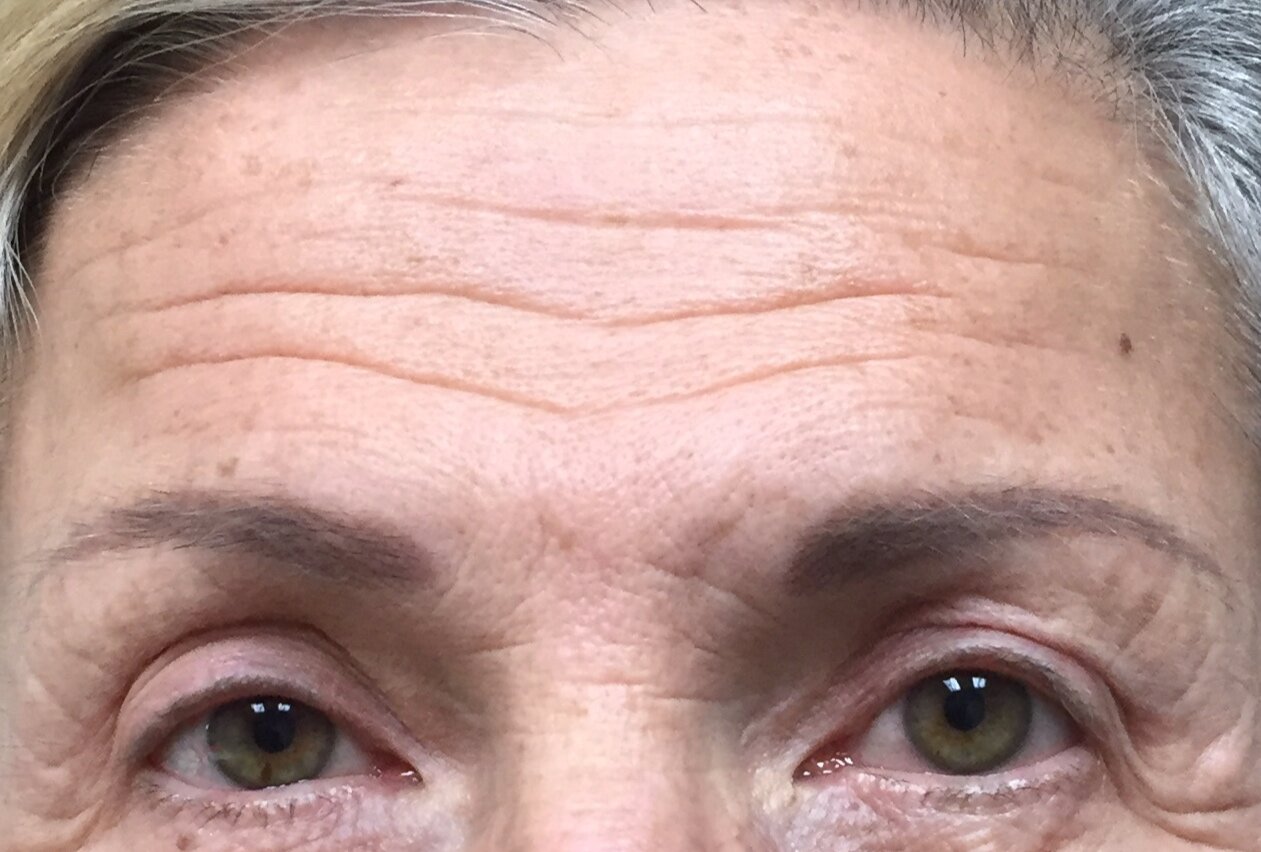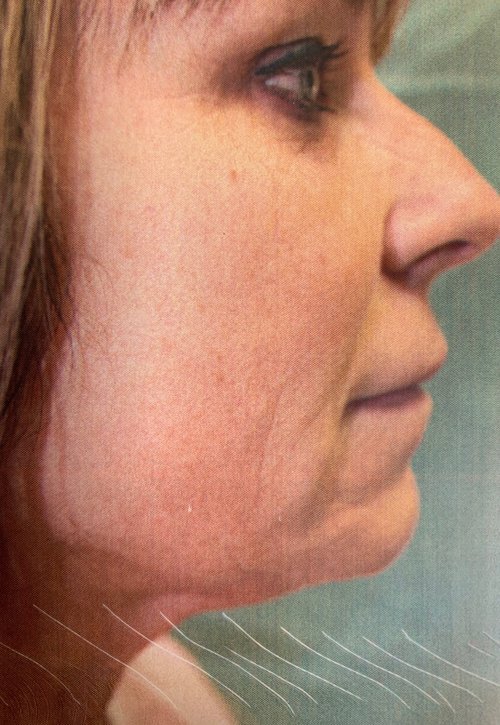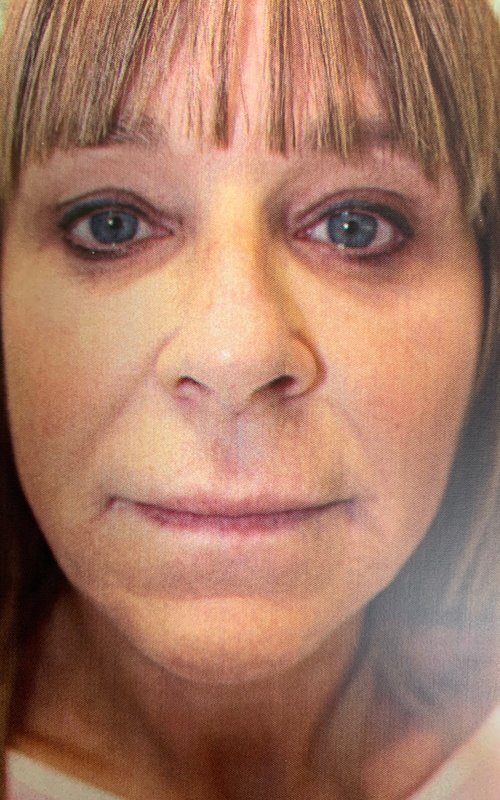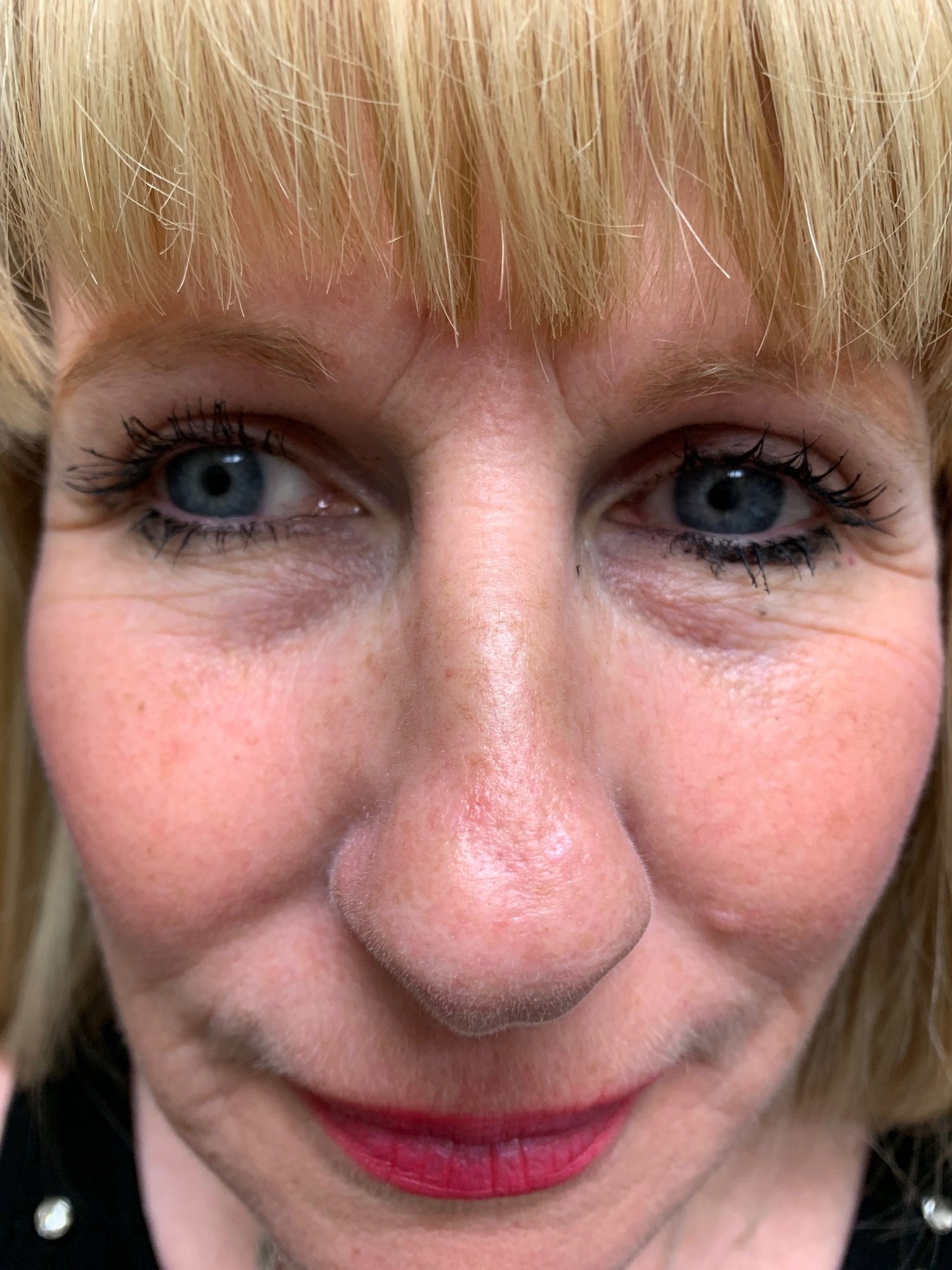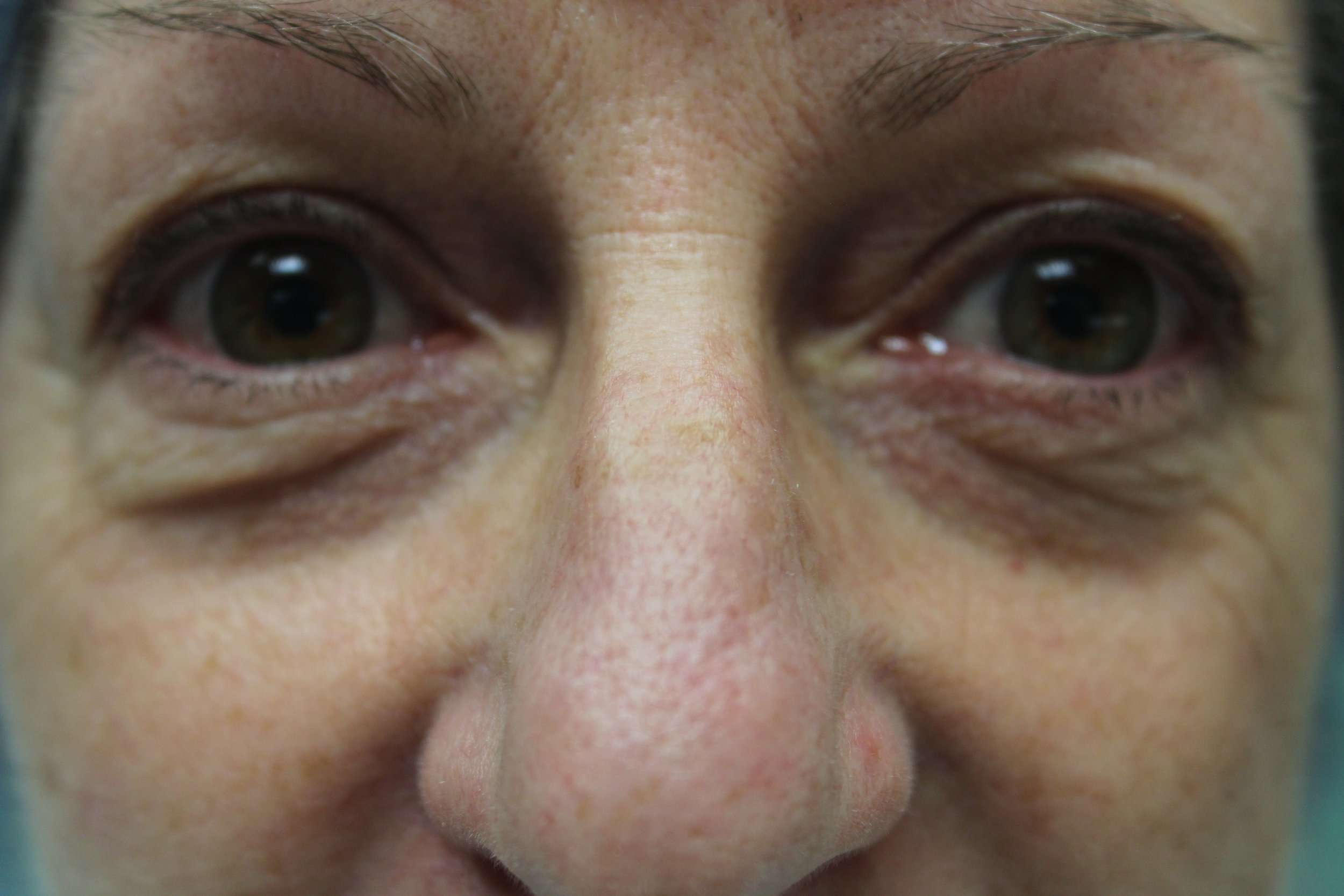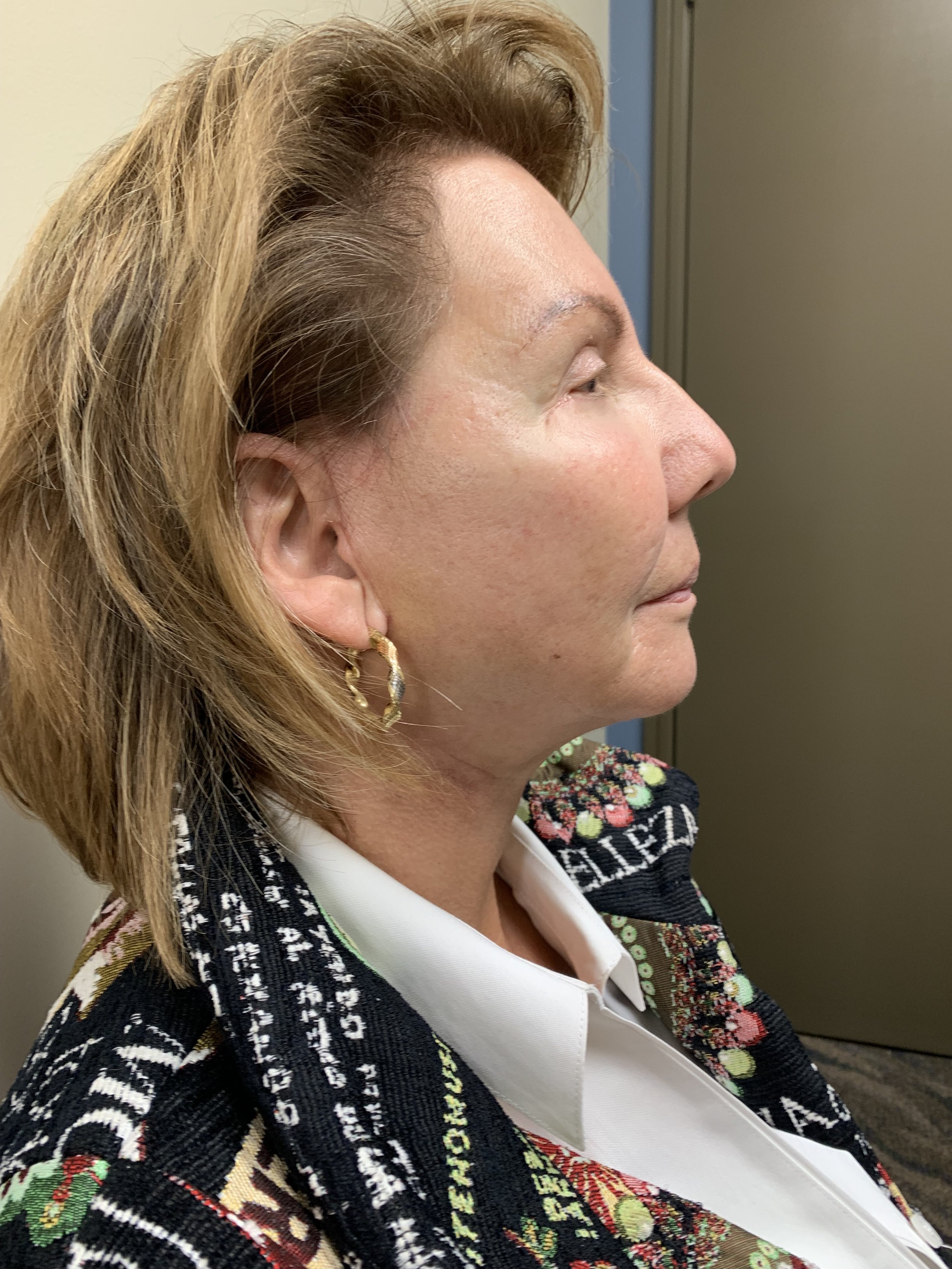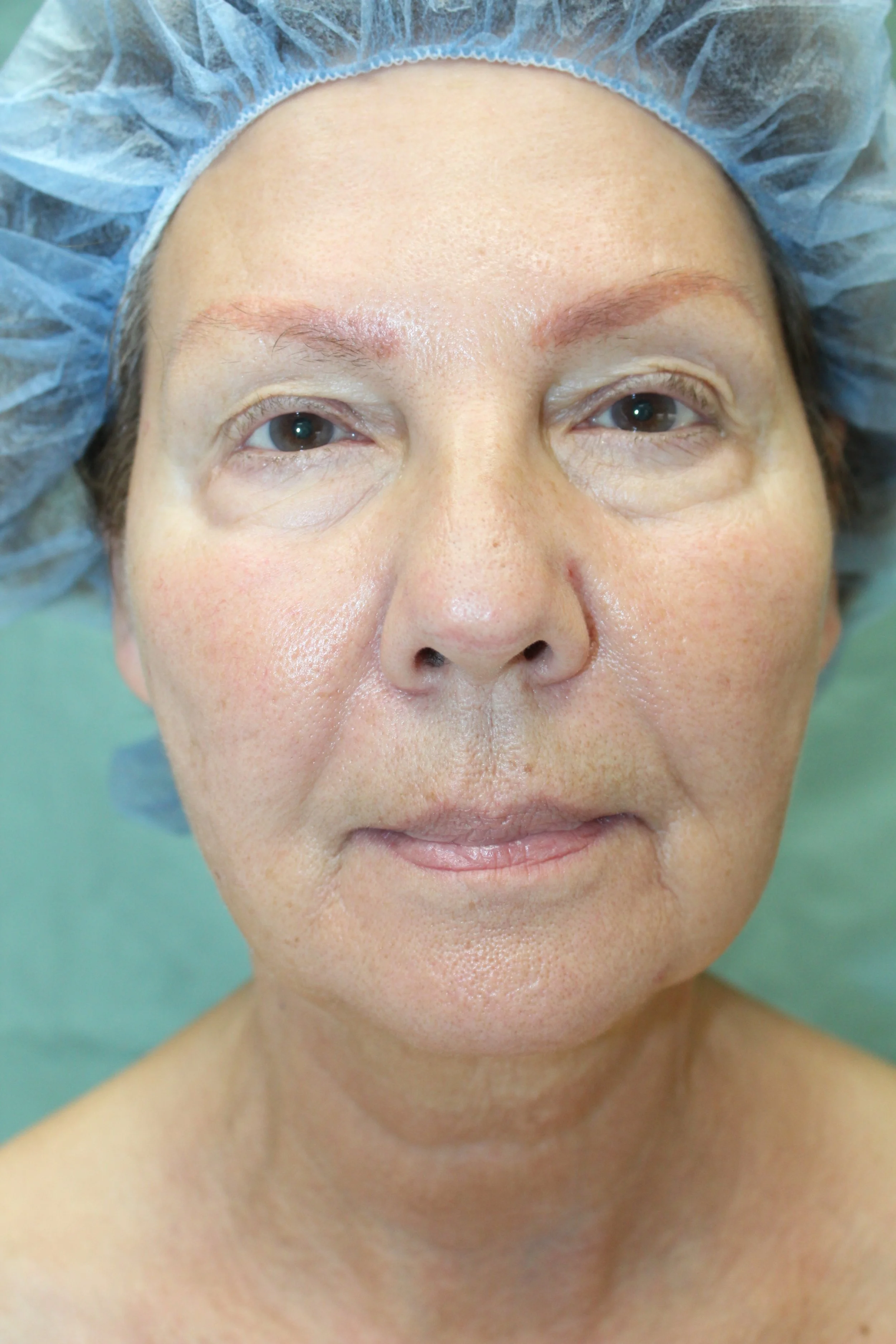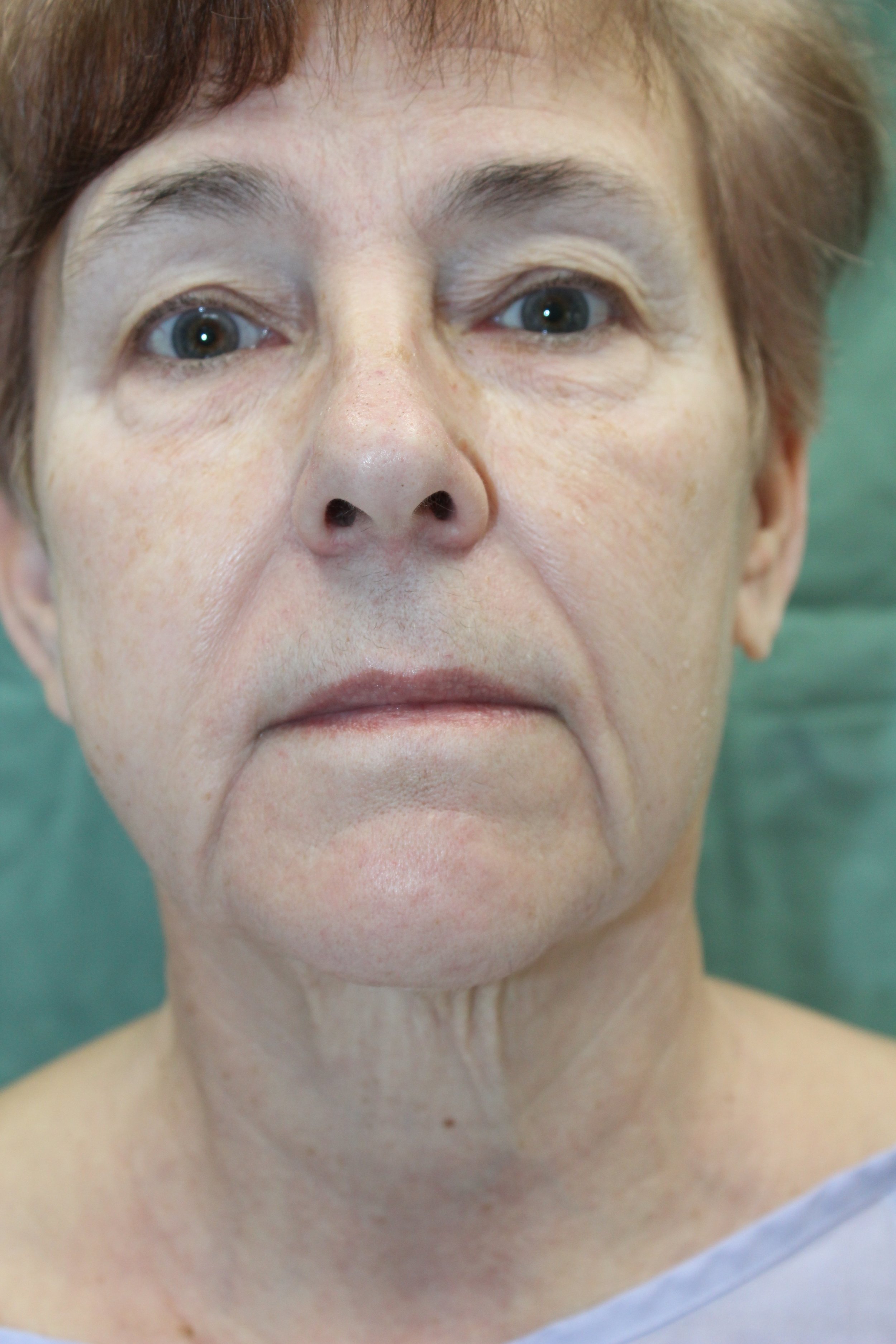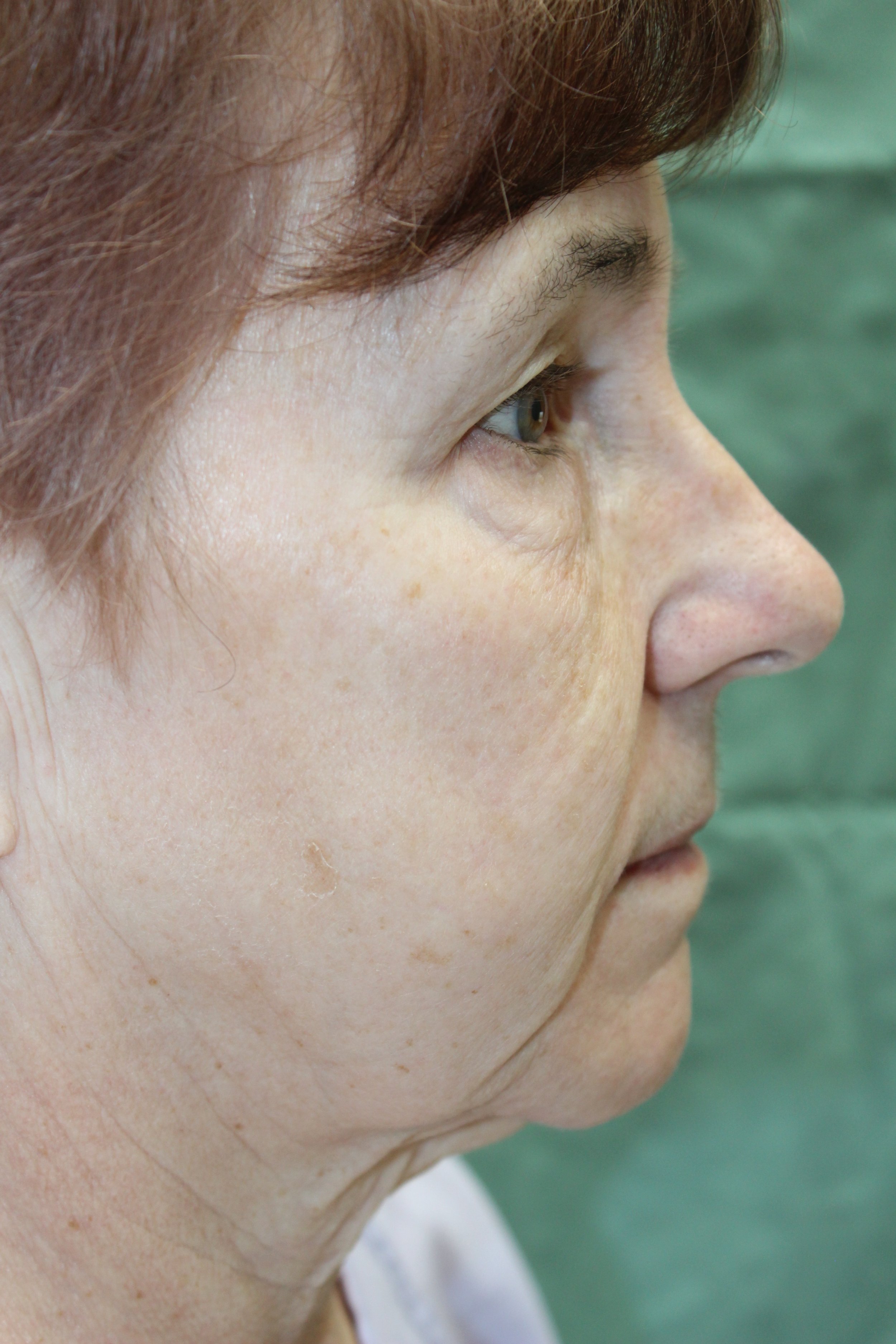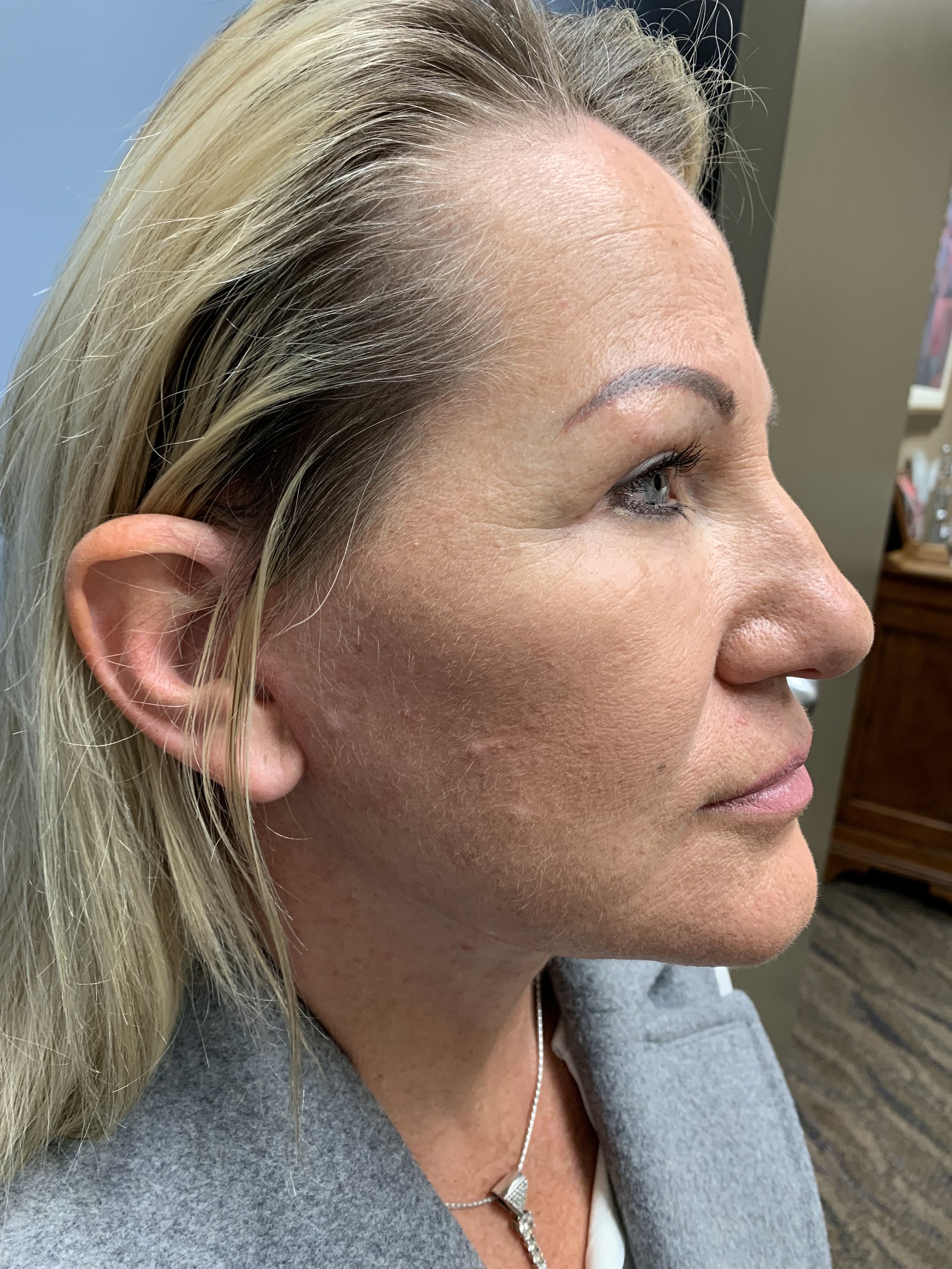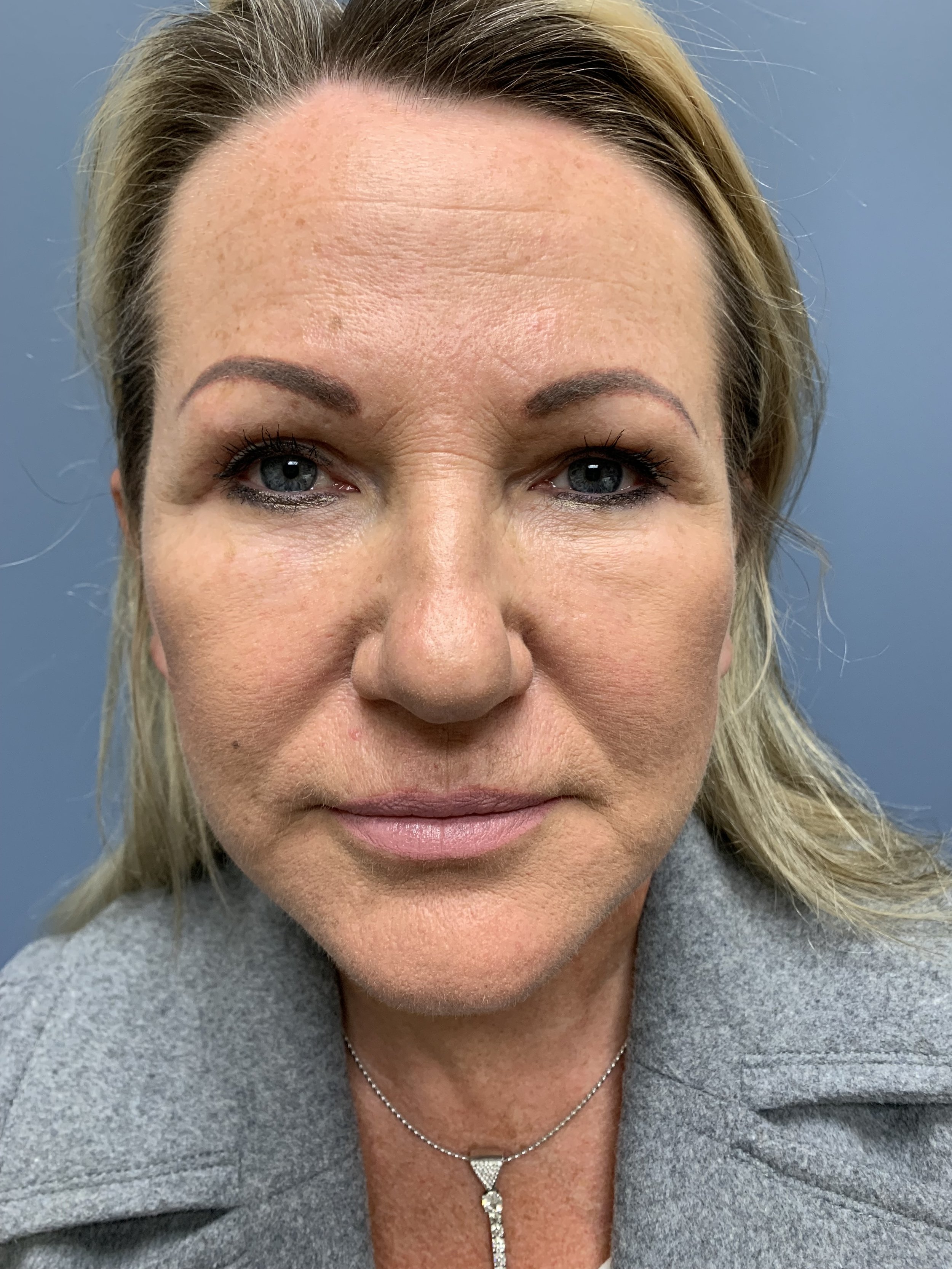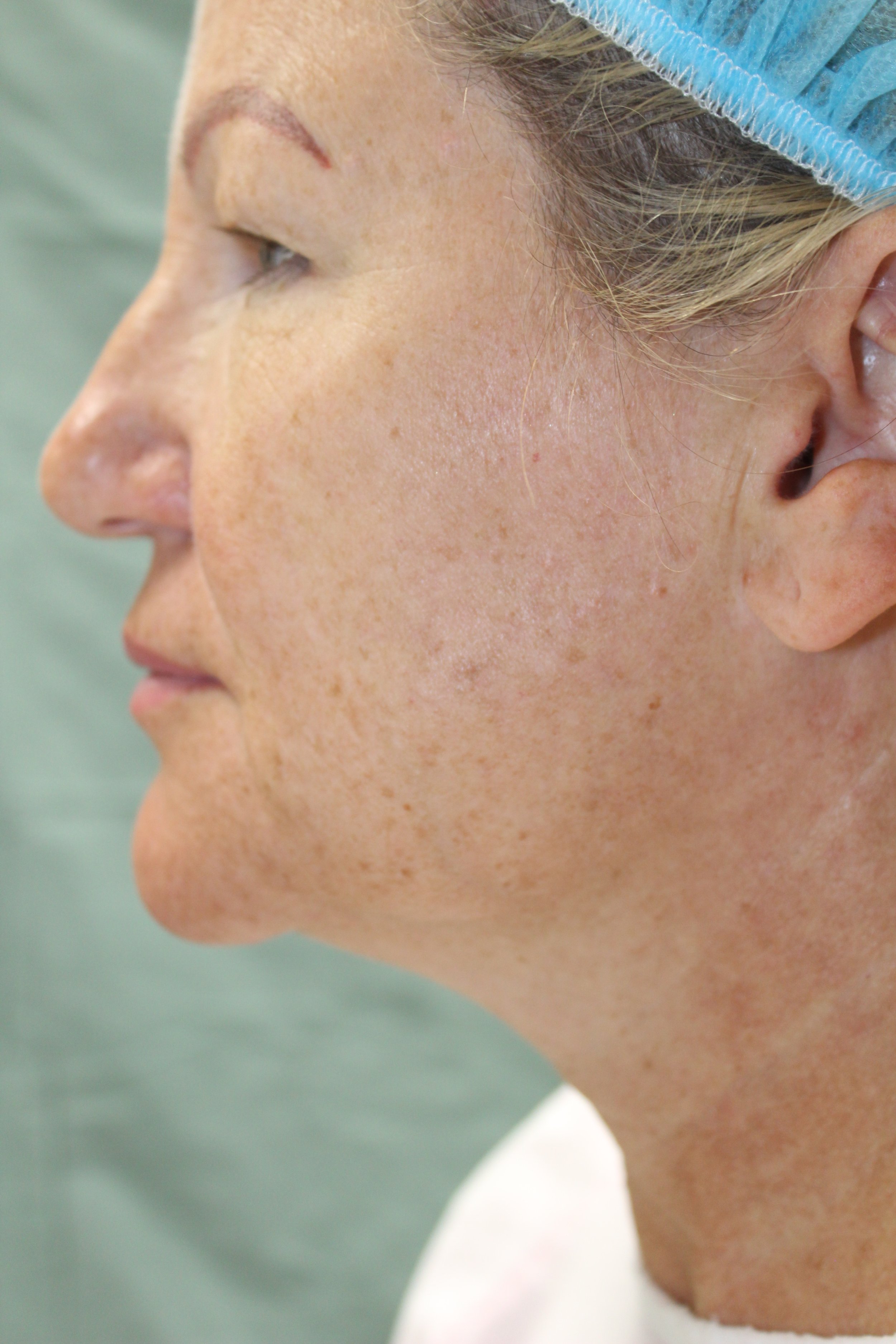
Eyelids
*DISCLAIMER: THIS SITE CONTAINS GRAPHIC & SURGICAL IMAGES THAT MAY BE DISTURBING TO SOME VIEWERS.
THIS SITE IS INTENDED FOR INDIVIDUALS OVER THE AGE OF 18.
**None of the images on this site have been enhanced or photoshopped.
Patient C - Pre-operative and 12 week Post-Operative Upper and Lower Blepharoplasty


Patient B - Pre-operative and Post-Operative Upper Blepharoplasty


Patient A - Pre-operative and 1 year Post-Operative Lower Blepharoplasty


Upper Eyelids
Before & After Photos
*Tap a patient image to enlarge & view the full series of pre and post-operative images.
Before the Surgery:
+ What is an Upper eyelid blepharoplasty?
This is a surgical procedure done most often under local anaesthesia to rejuvenate an ageing upper eyelid.
+ When is an upper eyelid blepharoplasty done?
Most often this is done as a person gets older and gravity begins to change the eyelid appearance. Occasionally a younger person, who inherits a heavy upper eyelid, will have the same features as an ageing eyelid.
+ What are the features of an ageing eyelid?
The first thing in assessing an upper eyelid is to look at where the eyebrows rest around the eye.
In a female, the eyebrows sit one finger breadth above the bony rim of the orbit (eye socket).
In a man, the eyebrow sits at the bony margin of the orbit. If the eyebrow sits low, it forces the skin and fat of the upper eyelid downwards, giving the appearance of a heavy, “tired” upper eyelid. If this is the case, a Brow lift operation is done to correct the low eyebrow position.
If the eyebrows are in a normal position, then the tired heavy eyelid appearance is caused by extra skin and fat of the upper eyelid. An upper eyelid operation (blepharoplasty) is done to correct the ageing “tired” eyelid problem.
The ageing eyelid will have excess skin and large underlying fat pads that descend toward the eyelash. The fine natural crease in the eyelid is often hidden by this extra skin. It is often difficult to wear makeup or mascara without it smudging or running.
As time passes, the excess skin may descend over the eyelash and begin to block the vision in the eye.
+ When does AHS (Alberta Health Services) cover the surgery to correct the upper eyelid?
There are specific criteria set out by AHS in order for this surgery to be covered by AHS:
The patient must be 65 years old
The excess eyelid skin must block the visual axis, in other words, the skin is overhanging the eyelashes to cause a “blinder effect” on vision
The loss of peripheral vision must be demonstrated using a “Hess Screen” test done by an Ophthalmologist
A muscle that actually opens the eye may start to loosen and detach. This is called “senile eyelid ptosis:”
There are two muscles that open your eyelid. As patients age, one of the muscles that open the eyelid may detach. This produces a droop in the eyelid, where the actual eyelid margin starts, drops, and covers the coloured part of the eye. It can descend so low that it starts to cover the pupil and block vision. The surgical repair for this is covered by AHS. There are other causes of eyelid ptosis other than ageing.
The Operation:
+ What is the surgery called to correct the Upper eyelid?
The surgery is called an Upper Eyelid Blepharoplasty (Upper Eyelid Repair).
The surgery is done most often under local (freezing) anaesthesia, with or without sedation.
Immediately before the surgery, with the patient sitting, a photograph is taken.
The surgery is then planned using a surgical marker on the eyelid.
With the patient lying, the local freezing is then injected (similar to a dental freezing). The freezing will often last throughout the entire day.
+ Please describe the surgery:
An incision is made, which follows the natural crease of the Upper Eyelid. The excess skin and fat, as planned preoperatively, are removed along with a small strip of muscle. The muscle that opens the eyelid is checked to insure it has not detached. The incision is then sutured closed and a small strip of tape is placed over the incision.
The surgical time is approximately 60 -90 minutes.
[*Please visit https://www.pclsc.ca/, select Upper Eyelid Blepharoplasty from the pull down menu.][1]
Please visit https://www.meadowlarksurgicalcosmetic.com, select Upper Eyelid Blepheroplasty from the menu.
+ What happens next?
Ice packs are placed on the eyes for a short period of time in the recovery room before the patient goes home with their ride. The patient cannot drive home and will need a ride from a friend or relative. The use of ice packs over the first 24 hours will decrease swelling and bruising. On day 5-6, the patient returns to have the sutures removed. There will be bruising and swelling for 7 – 10 days after surgery. The amount will vary from patient to patient. The use of Aspirin, Advil and Herbal supplements are discouraged as these products will increase the bleeding and bruising during and after surgery.
One week off work is recommended.
All patients considering eyelid surgery should have a full eye examination by an ophthalmologist or optometrist prior to eyelid surgery to insure good eye health
The Risks:
+ The standard surgical risks for any surgery apply.
With any surgery there are surgical and anesthetic risks.
Aside from the rare risks of an anesthetic event, some of the general and specific surgical risks for this procedure would include:
Excessive swelling (called chemosis)
Dry eye: because of the reduction in weight of the upper eyelid from the skin and fat removal, there may be a short time in the post-operative period where the upper eyelid opens slightly wider than normal. The eye will be exposed to more air and light which may produce or worsen a dry eye. Lubricating the eye with drops or gels is recommended in this postoperative period. Failure to treat dry eyes can cause cornea damage.
Vision: this surgery will have no direct effect on your vision. Your eyeglass prescription will not change.
- Scarring
- Infection
- Sensation change to the eyelash for up to 3 months
- Discomfort: this is mild to moderate. Most patients may require pain medication for a day or two after surgery. Avoid driving a vehicle if you are taking narcotic medication.
- Asymmetry
- Bleeding (hematoma)
- Corneal dryness or corneal abrasion
- Time off work and exercise
*This list is not complete.
During the consultation with the patient, Dr. Giuffre will outline and explain each of the risks in detail.
+ How long does the surgical improvement last?
With the exception of the younger patient having surgery for an inherited heavy eyelid at a much younger age, most patients in their forty’s and onward will often enjoy the results of the surgery for many decades. Repeat blepharoplasty surgery is very uncommon.
The Followup:
+ How often do I need to come back for a checkup after the surgery?
Postoperative visits include a 5-6 day post op visit, to have the sutures removed, and a 6 week visit in the office to review the preoperative photograph and the surgical result. If there are any patient concerns, Dr. Giuffre provides his home phone number for patient's direct access.
After the 6 week visit, if there are any future requests for an appointment, they are made directly with Dr. Giuffre office and an expedited visit is arranged.
Financing:
+ Does the public health care system cover any of the costs of upper eyelid surgery? What about my private insurance?
Alberta Health Services will cover upper eyelid surgery for patients who satisfy the criteria for coverage as outlined in above. They do not cover eyelid surgery for aesthetic reasons, even with a family doctor referral or a psychiatric or psychological referral.
Private insurance may cover the cost. Please contact your insurance company for written confirmation of coverage.
+ Can I finance the costs of the surgery? How do I do this?
Dr. Giuffre does not provide in house financing for cosmetic procedures.
There are a number of companies across Canada that will finance cosmetic surgery, similar to car financing or mortgages.
Please refer to the links provided for this information.
iFINANCE: www.ifinancecanada.com
CREDIT MEDICAL: www.creditmedical.com
**Dr. Giuffre has no financial or business relationship or affiliation with any of these companies.
+ What about having my Cosmetic Surgery in another country where it is cheaper?
There is a current trend to have surgery out of your country where the surgery may be cheaper.
We call this tourist surgery.
There are a number of additional risks associated with tourist surgery, which include:
The surgical skill, experience, licensing and education of an unknown surgeon.
Canada has very strict rules and requirements to be a licensed Plastic Surgeon (FRCS(C)) in our country. Your Plastic Surgeon has completed an undergraduate degree (4 years), an MD degree (4 years), a Fellowship Degree in Plastic Surgery (5 years) and often a post Fellowship (1-2 years).
A “friend” is not a good reference, nor is glitzy advertising.
The safety, sterility and equipment quality, including anaesthesia machines in the hospital or private surgical suite could be questionable; this may lead to increased risk of infection and anaesthetic risks.
Post operative care is limited to the time you spend in their country.
If you have a complication, to see your original surgeon, you will have to fly back to where your procedure took place, or see a new surgeon in your own Country.
If you have an unsatisfactory result, you will have to fly back to see your original surgeon or find a new Surgeon.
The cost of the repair may exceed what you originally paid, and the final result, fixing a mistake, is often not as good as it could have been had the surgery been done correctly the first time.
After accounting for the accumulated costs of the air travel, hotel, surgery and postoperative care, the perceived cost savings may not be significant.
If you have a severe, life threatening complication, Alberta Health Care will cover the medical costs for your care.
Correcting the reconstructive problem, as a result of the complication, would be the patient’s financial responsibility.
Lower Eyelids
Before & After Photos
*Tap a patient image to enlarge & view the full series of pre and post-operative images.
Before the Surgery:
+ What is a LOWER eyelid blepharoplasty?
This is a surgical procedure done most often under local anaesthesia to rejuvenate an ageing lower eyelid.
+ What are the features of an ageing eyelid, and when is a lower eyelid blepharoplasty done?
Most often a lower eyelid blepharoplasty is done as a person gets older, and gravity begins to change the eyelid appearance. As time passes, with gravity effects, the eyelid begins to sag:
The skin loosens and excess wrinkles form.
The normal fat pads (there are 3) under the eyelid become prominent and bulge. This creates a “tired” sleep deprived appearance.
The crease below the eyelid called the tear trough becomes exaggerated and deepens.
The fat pad over the cheek prominence may become prominent (malar fat pad).
The tone of lower eyelid becomes lax, allowing the lower eyelid to slowly fall away and downward on the eyeball, causing an increase white (scleral) show below the colored part of the eye (iris).
Occasionally a younger person, who inherits a heavy lower eyelid, with premature formation of heavy bags under the eyes, and often with skin wrinkling, will have the same features as an ageing eyelid.
Most often patients will complain of a tired , sleep deprived old appearance to the lid, even after a good night rest.
+ Will AHS (Alberta Health Services) cover the surgery to correct the lower eyelid?
The corrective procedure (lower eyelid blepharoplasty) for the lower eyelid aging is not covered by Alberta Health Services.
The Operation:
+ What is the surgery called to correct the Lower eyelid?
The surgery is called a Lower Eyelid Blepharoplasty (Lower Eyelid Repair). The surgery is done most often under local (freezing) anaesthesia, with or without sedation.
Immediately before the surgery, with the patient sitting, a photograph is taken.
The surgery is then planned using a surgical marker on the eyelid.
With the patient lying, the local freezing is then injected (similar to a dental freezing). The freezing will often last throughout the entire day.
+ Please describe the surgery:
After the lower eyelid is frozen, an incision is made just below the lower eyelid eye lashes. The eyelashes are never cut.
The skin is then reflected downward to expose the fat pads;
the skin attached to the bone along the tear trough is released.
Some of the excess fat is removed and the remainder is used to pad the bone along the tear trough.
The eyelid is then tightened to correct the drooping eyelid on the eyeball (scleral show).
A small amount of excess skin is then removed to eliminate the excess wrinkling.
The incision is then sutured closed and a small strip of tape is placed over the incision. The surgical time is approximately 60 -90 minutes.
[For more information, please visit www.pclsc.ca, selecting Lower Eyelid Blepharoplasty from the pull down menu.][1]
For more information, please visit https://www.meadowlarksurgicalcosmetic.com, selecting Lower Eyelid Blepharoplasty from the menu.
+ What happens next?
Ice packs are placed on the eyes for a short period of time in the recovery room before the patient goes home with their ride. The patient cannot drive home and will need a ride from a friend or relative. The use of ice packs over the first 24 hours will decrease swelling and bruising. On day 5-6, the patient returns to have the sutures removed. There will be bruising and swelling for 7 – 10 days after surgery. The amount will vary from patient to patient. The use of Aspirin, Advil and Herbal supplements are discouraged as these products will increase the bleeding and bruising during and after surgery.
One week off work is recommended.
+ What if I want both my Upper and Lower eyelids done at the same time?
This is very common. If both the upper and lower eyelids have aged at the same rate, in order to maintain facial balance, both the upper and lower eyelids would be repaired during the same operation. If only the upper eyelids or only the lower eyelids are repaired surgically, this may create a facial imbalance where the repaired lids look much younger than the unrepaired natural lid. For this reason both upper and lower eyelids are often repaired at the same operation. In this instance, the patient is given intravenous sedation along with local anaesthesia for the surgery.
Occasionally, only the upper eyelids have prematurely aged when compared to the lower eyelids. In this instance, only the upper eyelid would be repaired. Similarly, if only the lower eyelids have aged prematurely when compared to the upper eyelids, then only a lower eyelid procedure would be done.
All patients considering eyelid surgery should have a full eye examination by an ophthalmologist or optometrist prior to eyelid surgery to insure good eye health.
The Risks:
+ The standard surgical risks for any surgery apply.
With any surgery there are surgical and anesthetic risks.
Aside from the rare risks of an anesthetic event, some of the general and specific surgical risks for this procedure would include:
Excessive swelling (called chemosis)
Dry eye: with an ageing lower lid, the adherence of the lid to the eyeball is lax. This may be exaggerated during the healing period. If this is severe, additional surgical manoeuvers may be required to correct this. The eye will be exposed to more air and light which may produce or worsen a dry eye. Lubricating the eye with drops or gels is recommended in this postoperative period. Failure to treat dry eyes can cause cornea damage.
Vision: this surgery will have no direct effect on your vision. Your eyeglass prescription will not change.
Ectropion: the scleral show (white part of the eye below the colored iris) is exaggerated.
- Scarring
- Infection
- Sensation change to the eyelash for up to 3 months
- Discomfort: this is mild to moderate. Most patients may require pain medication for a day or two after surgery. Avoid driving a vehicle if you are taking narcotic medication.
- Asymmetry
- Bleeding (hematoma)
- Corneal dryness or corneal abrasion
- Time off work and exercise
*This list is not complete.
During the consultation with the patient, Dr. Giuffre will outline and explain each of the risks in detail.
+ How long does the surgical improvement last?
With the exception of the younger patient having surgery for an inherited heavy eyelid at a much younger age, most patients in their forty’s and onward will often enjoy the results of the surgery for many decades. Repeat blepharoplasty surgery is very uncommon.
The Followup:
+ How often do I need to come back for a checkup after the surgery?
Postoperative visits include a 5-6 day post operative visit, to have the sutures removed, and a 6 week visit in the office to review the preoperative photograph and the surgical result. If there are any patient concerns, Dr. Giuffre provides his home phone number for patient's direct access.
After the 6 week visit, if there are any future requests for an appointment, they are made directly with Dr. Giuffre office and an expedited visit is arranged.
Financing:
+ Does the public health care system cover any of the costs of upper eyelid surgery? What about my private insurance?
Alberta Health Services does not cover lower eyelid surgery for aesthetic reasons, even with a family doctor referral or a psychiatric or psychological referral.
Private insurance may cover the cost. Please contact your insurance company for written confirmation of coverage.
+ Can I finance the costs of the surgery? How do I do this?
Dr. Giuffre does not provide in house financing for cosmetic procedures.
There are a number of companies across Canada that will finance cosmetic surgery, similar to car financing or mortgages.
Please refer to the links provided for this information.
iFINANCE: www.ifinancecanada.com
CREDIT MEDICAL: www.creditmedical.com
**Dr. Giuffre has no financial or business relationship or affiliation with any of these companies.
+ What about having my Cosmetic Surgery in another country where it is cheaper?
There is a current trend to have surgery out of your country where the surgery may be cheaper.
We call this tourist surgery.
There are a number of additional risks associated with tourist surgery, which include:
The surgical skill, experience, licensing and education of an unknown surgeon.
Canada has very strict rules and requirements to be a licensed Plastic Surgeon (FRCS(C)) in our country. Your Plastic Surgeon has completed an undergraduate degree (4 years), an MD degree (4 years), a Fellowship Degree in Plastic Surgery (5 years) and often a post Fellowship (1-2 years).
A “friend” is not a good reference, nor is glitzy advertising.
The safety, sterility and equipment quality, including anaesthesia machines in the hospital or private surgical suite could be questionable; this may lead to increased risk of infection and anaesthetic risks.
Post operative care is limited to the time you spend in their country.
If you have a complication, to see your original surgeon, you will have to fly back to where your procedure took place, or see a new surgeon in your own Country.
If you have an unsatisfactory result, you will have to fly back to see your original surgeon or find a new Surgeon.
The cost of the repair may exceed what you originally paid, and the final result, fixing a mistake, is often not as good as it could have been had the surgery been done correctly the first time.
After accounting for the accumulated costs of the air travel, hotel, surgery and postoperative care, the perceived cost savings may not be significant.
If you have a severe, life threatening complication, Alberta Health Care will cover the medical costs for your care.
Correcting the reconstructive problem, as a result of the complication, would be the patient’s financial responsibility.
“Life is full of choices; your character reflects those choices.”


